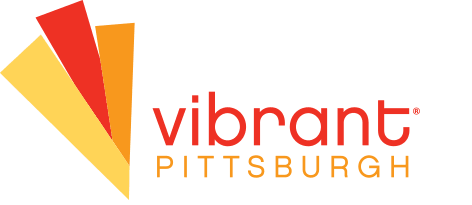



With funding from Program to Aid Citizen Enterprise (PACE), Vibrant Pittsburgh staff and representatives from member organizations Allegheny County and the City of Pittsburgh traveled to Charlotte, NC in April 2017 to learn more from a region that has seen a marked increase in population. According to a U.S. Census Bureau report in 2012, the Charlotte area had the fastest growing population over the last decade (2000 to 2010) among urban areas with populations of at least 1 million people, with that surge in growth (32%) led by a 65% increase in the nonwhite population (Charlotte Chamber of Commerce, 2014).
Vibrant Pittsburgh met with representatives from the Charlotte Chamber of Commerce, the Charlotte Regional Partnership, and the Charlotte Chamber Young Professionals with a few goals in mind:
- Learn more about Charlotte’s strategies for engaging and keeping millennials in the region
- Gather general strategies and tactics being used to increase the overall retention of people to the region
- Find specific ideas that are transferrable and actionable in the Pittsburgh region
Ingredients for Charlotte’s Success
Talking to representatives from economic development organizations in the Charlotte region made it clear that Charlotte’s success includes a few key ingredients:
Marketing and Messaging: The Charlotte Region is savvy in its regional marketing and messaging, committing to a consistency in branding and messaging across organizations to impact, influence and optimize external perception about the region.
Job Growth: The Charlotte region has focused on bringing and creating jobs in the region. In October 2016, “…North Carolina was ranked No. 8 in terms of raw change and No. 15 in percentage change at 2% growth” (Thomas, 2016) in employment data released by the U.S. Bureau of Labor Statistics.
Travel Hub: Charlotte’s airport is a focal point for both job creation and population attraction and retention. In April 2016, Charlotte Douglas International Airport was ranked fifth-busiest in the nation and sixth-busiest in the world, seeing 44.9 million travelers in 2015 (Portillo, 2016). A $200 million construction project adding 9 gates to a 13-gate concourse underway is set to be completed in 2018 as part of an overall $2.5 billion ten-year improvement project (Reed, 2016).
Sun Belt City: Last, it cannot be denied that Charlotte’s Sun Belt City status plays a role in its population increase. Population growth has been liveliest in the south and west for some time now, and migration patterns to these geographic areas are not likely to change soon.
What’s Our Recipe?
Pittsburgh is very different from Charlotte in terms of population size, climate, and other factors. Can we still learn from Charlotte’s success?
Regional Branding
Regional marketing and messaging is one area where Pittsburgh could take a page out of Charlotte’s playbook. When asked about their perceptions of Pittsburgh, board members from the Charlotte Chamber Young Professionals reported not having any impression of Pittsburgh as a region, and were unable to say if they would make the move to Pittsburgh because they didn’t have a current perception of the job market and amenities the city has to offer. Consistency in branding language for the region across business sectors, economic developers and elected officials will coordinate Pittsburgh’s various marketing and messaging campaigns targeted in other markets.
Pittsburgh International Airport: Expanding our Reach
Expanding the flights offered through the Pittsburgh International Airport, including securing more West Coast direct and international flights, is already at the top of Pittsburgh’s to-do list.
Job Growth
Solid job growth helps to attract and retain professionals that are highly mobile and looking for a solid career trajectory in the place they call home. This is an area that needs focused attention and care - the Pittsburgh region gained 5,900 jobs between April 2016 and April 2017, a 0.5 percent increase over the year, but that percentage was well below the benchmark average of 1.7 percent growth and was the third lowest of all benchmark regions. While Pittsburgh has a steady stream of job openings (over 20,000 at any given time) and given the region’s need to provide people (particularly millennials) with career advancement opportunity, increasing the rate at which we grow new jobs in the region is key to the success of the region’s comprehensive growth strategy.
Closing Thoughts
This is an exciting time in the Pittsburgh region with its booming tech sector, extraordinary business start-up culture and fast growing millennial generation. And, there is more work to be done. As Charlotte acknowledged, we need both the region’s native and long-time residents, along with newcomers, to tackle regional issues while also capitalizing on the region’s opportunities. In this way, we can ensure that everyone will be able to benefit from the greater Pittsburgh region’s unparalleled transformation.
Charlotte Chamber of Commerce. (2014, July). Diversity in Charlotte. Retrieved from Charlotte Chamber of Commerce: http://charlottechamber.com/clientuploads/Diversity/2013DiversityInCharlotte.pdf
Portillo, E. (2016, April 11). Charlotte Douglas jumps to fifth-busiest airport in nation. Retrieved from The Charlotte Observer: http://www.charlotteobserver.com/news/business/article71155017.html
Reed, T. (2016, February 29). Charlotte Airport Will Expand To Make Room For Airlines Besides Hub Carrier American. Retrieved from Forbes: https://www.forbes.com/sites/tedreed/2016/02/29/charlotte-airport-expands-to-make-room-for-other-airlines-besides-hub-carrier-american/#602eced17f87
Thomas, G. S. (2016, November 18). How North Carolina's job growth stacks up to national stats (DATABASE). Retrieved from Charlotte Business Journal: http://www.bizjournals.com/charlotte/news/2016/11/18/north-carolina-job-growth-unemployment-october2016.html